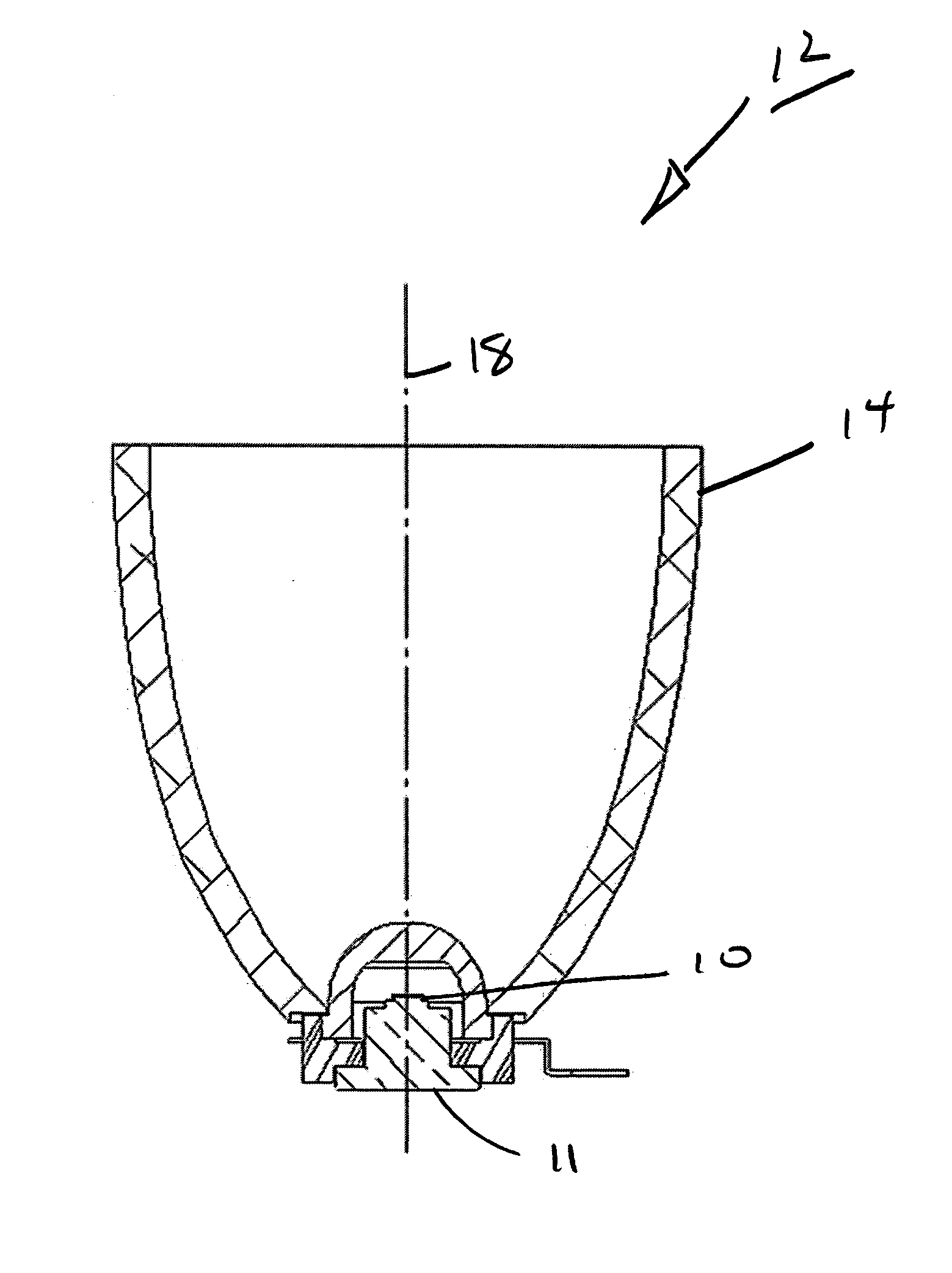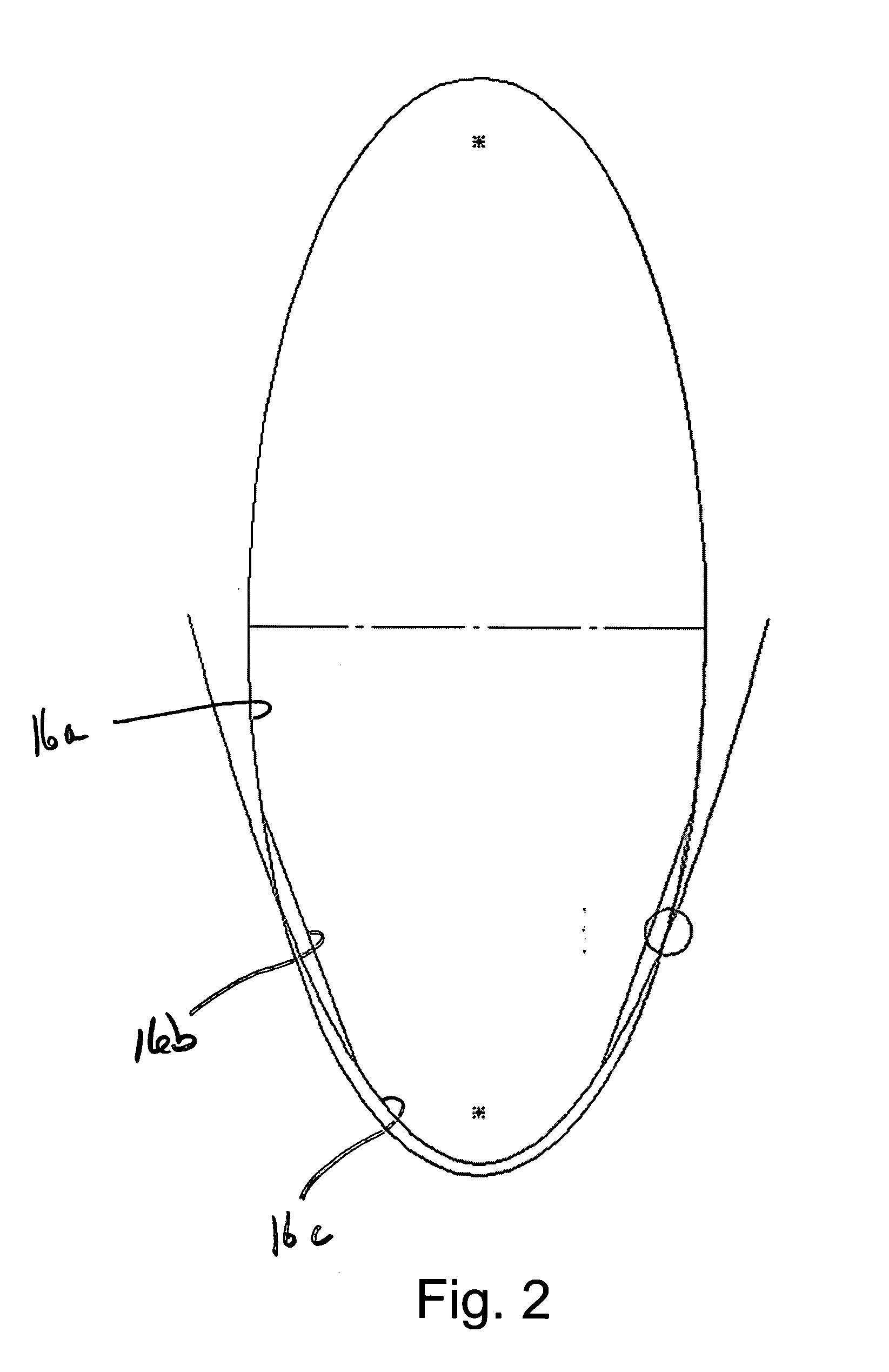Apparatus and method for improved illumination area fill
- Summary
- Abstract
- Description
- Claims
- Application Information
AI Technical Summary
Benefits of technology
Problems solved by technology
Method used
Image
Examples
Embodiment Construction
[0042] The preferred embodiment of the invention is directed to light emitting diodes (LED) and a method of collecting and distributing the energy radiated from them with increased energy efficiency. In fact, in the case of LED light sources, the preferred embodiment results in energy efficiencies approximately equal to or better than 90%. However, it is to be expressly understood that the invention is not limited to LED light sources, but may be employed with incandescent, plasma arc, fluorescent light sources or any type of light source now known or later devised, particularly those with similar or equal energy efficiencies. In addition, it must be understood that the term, “light” is used in its broadest sense as including the ultraviolet and infrared portions of the spectrum and that any light frequency which can be approximately modeled by optical ray tracing is contemplated was being within the scope of the invention.
[0043] Devices utilizing the invention would be used in gen...
PUM
 Login to view more
Login to view more Abstract
Description
Claims
Application Information
 Login to view more
Login to view more - R&D Engineer
- R&D Manager
- IP Professional
- Industry Leading Data Capabilities
- Powerful AI technology
- Patent DNA Extraction
Browse by: Latest US Patents, China's latest patents, Technical Efficacy Thesaurus, Application Domain, Technology Topic.
© 2024 PatSnap. All rights reserved.Legal|Privacy policy|Modern Slavery Act Transparency Statement|Sitemap



